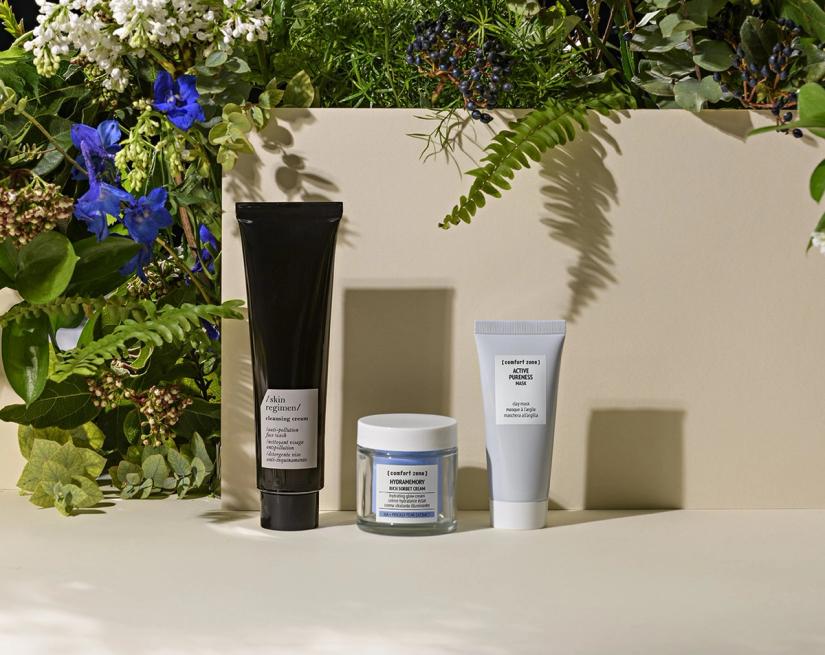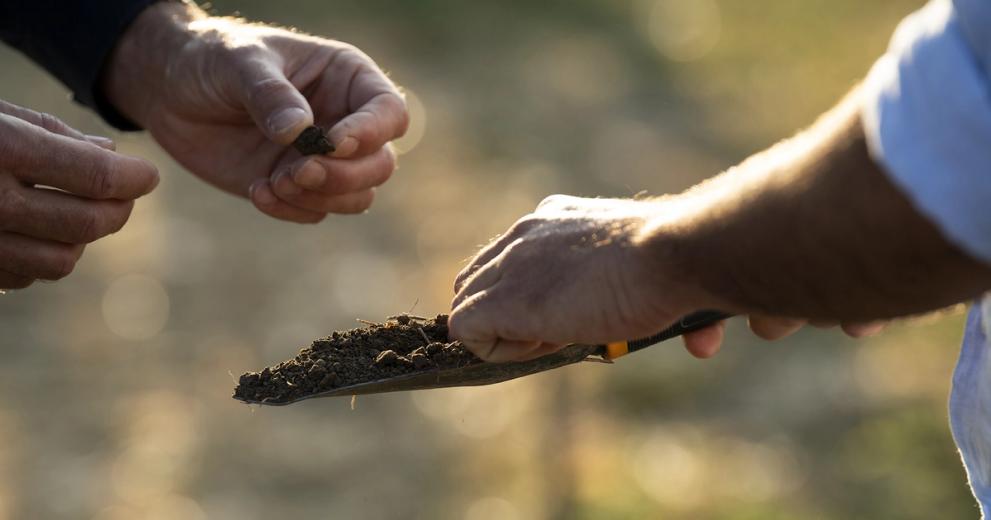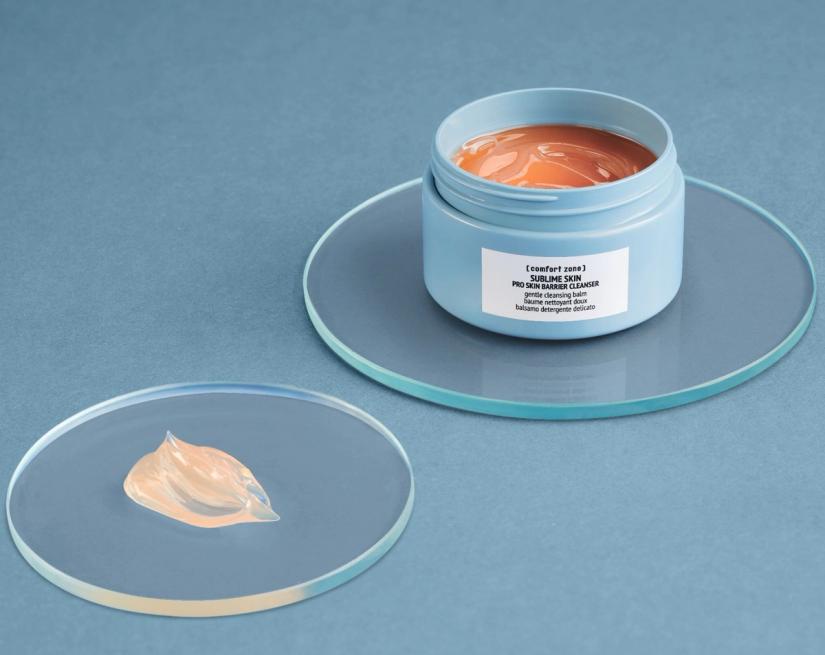skin care
Sustainability In Skincare: What Is It?
Simon Jacskon | Head of Botanical Research
8 min read

Our society is more aware than ever of the environmental impact of a wasteful lifestyle. Certain industries–like fashion, cosmetics, and skincare–can be exceptionally impactful on the planet (and not in a good way).
Skincare products (from lotions to anti-aging serums) can generate waste in many ways. The packaging itself is often made with disposable plastic that sometimes isn’t even recyclable. Sometimes the ingredients themselves are unsustainable, sending microplastics into the waterways and causing deforestation in biodiverse parts of the world. The manufacturing process of creating skincare products can also be wasteful and unsustainable, generating waste and causing greenhouse gas emissions.
The good news is, there are many skincare brands that are starting to take steps to ensure sustainability in their business practices and production. Sustainability in skin care can take many forms. Often brands that strive for sustainability will use less plastic, glass packaging, and non-toxic ingredients, and maintain a minimal carbon footprint in their production facilities.
At the end of the day, sustainability in skin care benefits pretty much everyone: the consumer and the planet. Keep reading to learn more about sustainability in skin care and how you can ensure that your skincare routine is sustainable.
"Choosing ingredients and products formulated with sustainable practices will naturally make us feel good about contributing to a healthy global environment, but our internal environment, our cells and skin structure, also benefit from the more potent action and energy of these ingredients. Win-win!"
Elisabeth Nehme - Global Brand Ambassador Comfort Zone
What Is Sustainability In Skincare?
Sustainability in skincare can mean a number of things. Usually, it means using products that come in recyclable packaging with ingredients that are minimally harmful to the environment. Sustainable skincare brands strive to create products while causing minimal harm to the environment in the process. A skincare routine that features all-natural products and refillable containers can make all the difference in the amount of waste you’re generating and the impact it has on the environment.

What Makes Skincare Unsustainable?
To understand the importance of sustainable skincare, one must first understand why standard skin care companies are often very unsustainable. The main factors that contribute to a lack of sustainability in skincare are the packaging, ingredients, and production.
Packaging
Packaging can be a wasteful aspect of skincare. This is because when you use a skincare product every day, eventually it runs out, prompting you to dispose of the container it was in. Many skincare products are packaged in plastic which is one of the least sustainable options. Because plastic is lightweight, it is easy and affordable to ship when compared with other materials, which is why it is a common packaging choice for skin care brands.
The problem with plastic, however, is that it can only be recycled one or two times before it is sent to a landfill. Sometimes, plastic skincare packaging is completely unrecyclable because it is made with a mix of plastics that cannot be reused at all and they are sent directly to a landfill. When plastic degrades in the environment it leaches greenhouse gasses into the environment.
Ingredients
Sometimes the actual ingredients in skincare are the problematic aspect. Palm oil is a common ingredient that’s added to skincare products that have a significant negative impact on the environment. Palm oil is found in roughly 70% of all cosmetics, it is one of the world's most widely used vegetable oil. Palm oil is used often because it is cheap to produce. It can be used to create emulsifiers, thickening agents, anti-aging ingredients, and antioxidants.
Palm oil is very unsustainable because it has a major impact on deforestation and rainforest-related climate change. Palm plantations cover a huge surface of the world and they usually replace what once were natural forests. When these forests are torn down to create palm plantations the native animals and plants in those areas suffer. Creating these palm plantations can also cause a massive amount of CO2 to be unleashed into the atmosphere. Unfortunately, most palm plantations exist where there once were biodiverse forests, now there is no biodiversity. Palm oil production has even led to endangered species.
Another unsustainable ingredient commonly found in skincare products are animal products. Animal by-products such as collagen, elastin, squalene, lanolin, tallow, carmine, and milk extracts are unsustainable to produce and they often lead to the harm or death of animals. Animal agriculture is a largely unsustainable practice, accounting for greenhouse gas emissions and potentially global warming.
Some other unsustainable ingredients commonly found in skincare products include:
- Petrolatum or petroleum jelly. This product is created by the oil industry. The oil industry is a big environmental polluter and the refinement process of this oil causes a lot of CO2 emissions.
- Any wood-based ingredients. Wood-based ingredients are usually sourced from trees, causing degradation of forests. These ingredients are often sourced from rare and even endangered tree species.
- Bisabolol. This is commonly used as an anti-irritant and is highly unsustainable since it is sourced from an endangered Brazilian tree called the Candeia tree.
Production
The actual manufacturing process of skincare products can be unsustainable. One of the things that make skincare products unsustainable is the overconsumption of water and the waste that is produced in the process.
No matter your age or the season, your skincare routine can be made more sustainable by choosing sustainable brands and taking steps to cut down on your personal waste.
The Beauty's Industry Role In Sustainability
Organic Ingredients
As more and more skincare brands recognize the importance of sustainability, organic ingredients are on the rise. Organic ingredients can be better for your skin and the planet, but it is important to note that organic doesn’t always mean sustainable. More than anything, products with a simple ingredient list of all-natural materials are likely going to be less of a stressor for the environment.
Organic ingredients are also better since they are produced using non-GMO practices, and they’re grown without the use of pesticides and other harsh chemicals that can leak into the environment.
Recyclable Packaging
Skincare brands that opt for recyclable packaging are inherently more sustainable. Some examples of sustainable packaging include recycled plastic, glass, and aluminum containers.
The cool thing about glass containers is that they can easily be repurposed and used for other things–think, reusing a glass jar as a cup or storage container. The other thing that makes glass incredibly sustainable is its ability to be recycled indefinitely, meaning the materials can be melted down and reused again and again and again. Although glass is typically considered to be more sustainable than plastic, it comes with its own challenges as well, including being heavier and more difficult to ship.
Aluminum is another sustainable option for skincare products. This is a less popular option for skincare packaging but it is beneficial since it's 100% recyclable and it too can be infinitely recycled like glass. Although the actual production of aluminum can be somewhat unsustainable, it is a very sustainable choice since it is easy to recycle and reuse and it is lightweight and easy to transport.
Brand Transparency
Typically, a truly sustainable brand will be open and honest about its business practices. Before choosing a skincare brand, do some research on its business practices and sustainability.

Steps You Can Take to Create a Sustainable Skincare Routine
As a consumer, you have a lot of power over how sustainable your skincare practices are. Try some of the following steps to ensure that you’re practicing a sustainable skincare routine.
Repurpose What You Can
Buying products that come in glass containers allows you the ability to repurpose some of the packaging. Repurposing can be even more sustainable than recycling since you’ll actively be using the product and some items that get sent to recycling end up in a landfill anyways.
Cut Down on Single-Use Products and Plastics
Single-use items like makeup wipes, cotton swabs, and under-eye patches are some of the least sustainable. Try to find more sustainable alternatives to single-use products and avoid plastics as much as possible.
One example would be replacing cotton swabs with reusable cotton. This is an easy swap that will significantly cut down your waste over the years. Reusable cotton swabs can easily be stored in a small container in your bathroom. Separate out the dirty ones after using them and wash them in the washing machine with your laundry.
Make Your Products Last
High-quality skin care products usually only need to be used in very small amounts. Make your products last by using them with modesty. The less you go through products, the less you’ll be buying and the less packaging you’ll be throwing away.
Only Buy What You Need
There is a skincare product for just about any skin type and concern. Keeping your skincare routine modest, with only a few highly effective products, will help you keep skin care purchases to a minimum. Find products you love and just stick to them so you don’t have to constantly test out and buy new stuff that you may not end up using.
Have skin care products you don’t use? Find a friend who may want them and give them away. Finding ways to use old or unused products is always more sustainable than simply throwing away perfectly good items.
Recycle As Much As Possible
When you run out of a product, try to refrain from chucking the container into the nearest trash can. See if the container is recyclable by checking the label. If it is, take it apart and clean it out before placing it in your recycling bin. If it has mixed materials (such as a glass container and a plastic top) separate these pieces before placing them in the recycling.
Read Ingredient Labels
Always check ingredients labels of skincare products before purchasing them. Look for unsustainable ingredients like palm oil and petroleum jelly to see if it is a sustainable product or not. Ingredient labels can be overwhelming and confusing even but it is important to take the time to look over the ingredients before purchasing a product.
Sustainability Matters
Skincare is one of the least sustainable industries, accounting for a lot of water usage and waste. Luckily there are sustainable skincare brands out there but you must be a smart consumer to separate out the real ones from those that are green washed. At Comfort Zone, we’re happy to offer high-quality skincare products that have a minimal impact on the planet.




